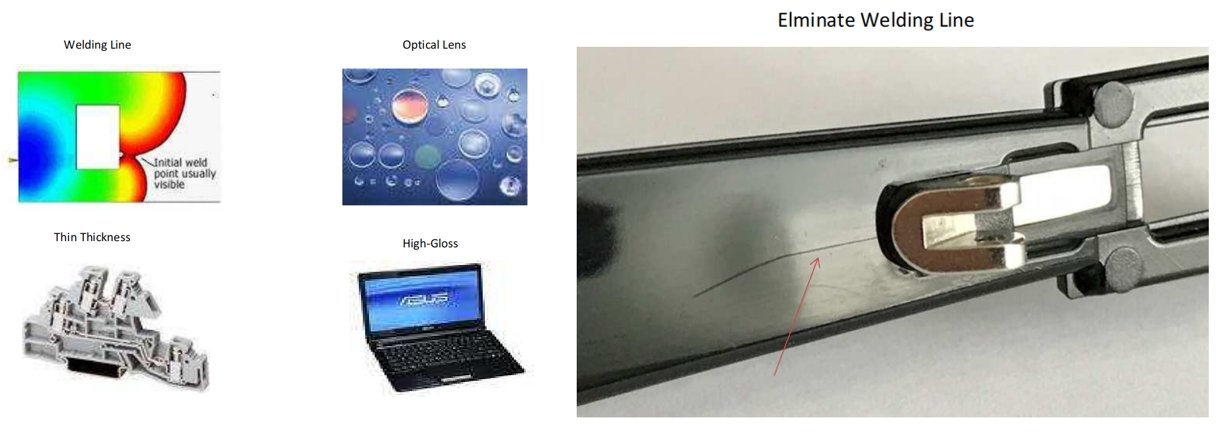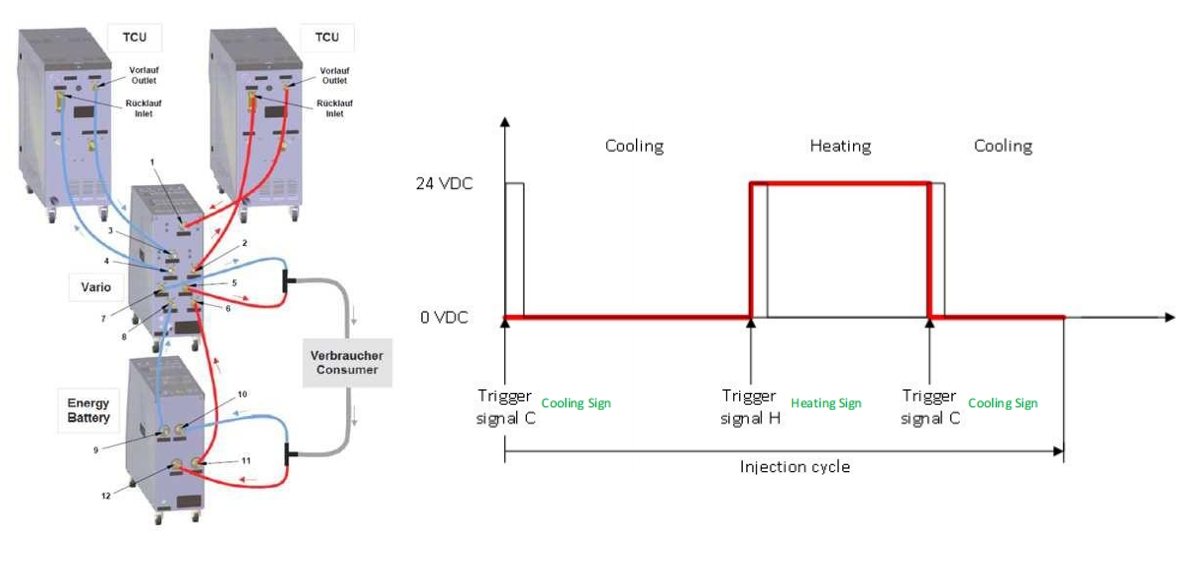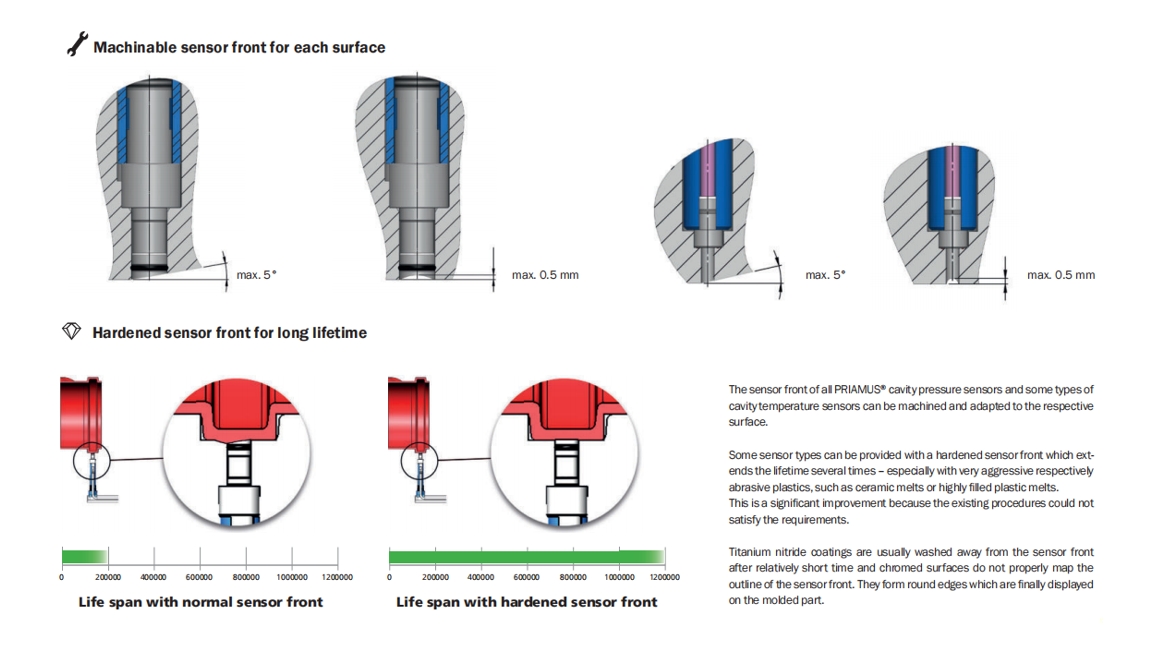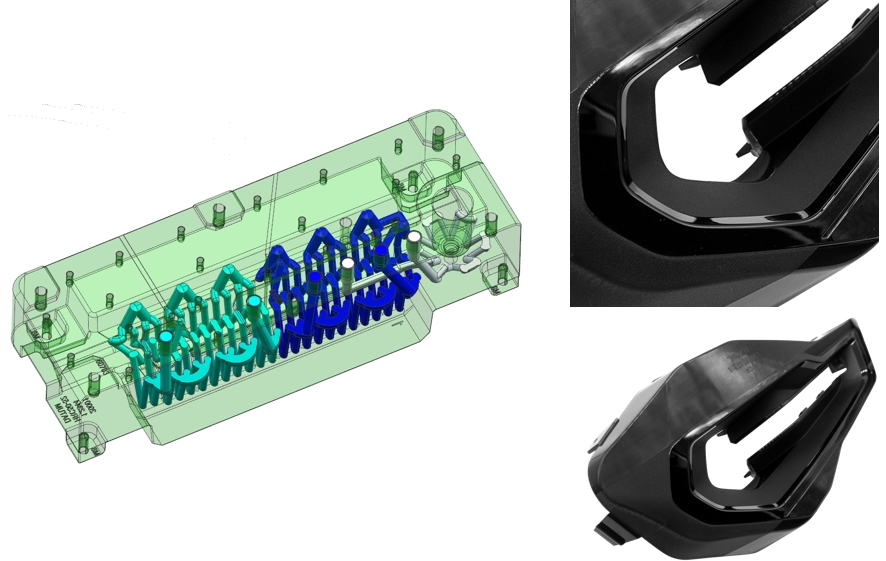High gloss is a typical manifestation of non-welding line injection molding, but it is not the whole picture. Packsonmold has many years of experience in high gloss molds and non-welding line injection molding.
Our Main Businesses
We primarily serve the following industries:
- Home appliances
- External decorations of electronic products (such as external panels for DVD, DMR, BD, BR, PDVD, and other audio-visual players)
- LCD TVs, computer LCD displays, automotive LCD displays
- Air conditioning, automotive interior parts, lamps, optical instruments, etc.
Why Do Injection Molding Products Need Non-Welding line Injection Molding?
We have encountered the same issues before, struggling to resolve welding marks, shrinkage marks, and other molding problems. These issues significantly affect the structural strength and appearance of products.

Technical Principles of High Gloss Non-Welding line Injection Molding
Compared to traditional injection molding technology, high gloss non-welding line injection molding has the following characteristics:
- In traditional injection molding, if the mold temperature is low, it can lead to welding marks, material patterns, dull and rough surfaces, and other quality issues, even though it can reduce warpage, shrinkage marks, and cycle time.
- Conversely, if the mold temperature is too high, it can improve the product's appearance quality but will extend the cycle time and increase costs, while also being prone to warpage, shrinkage, and dimensional defects.
Injection molding employs specific rapid cooling and heating temperature control equipment, which can simultaneously address both issues. By rapidly changing the mold temperature using high-temperature water or steam and cooling water, the temperature of the mold can be controlled effectively.
Specific Steps:
1. Before injection, heat water or steam (e.g., at 150℃) is injected into the mold, raising the mold temperature above the resin's thermal deformation viscosity temperature.
2. Then, molten resin is injected, allowing the material at the front end to remain in a viscous state, thus avoiding the formation of welding lines and achieving good surface quality.
High gloss injection molding can eliminate surface welding lines, welding marks, corrugation, and silver line patterns, completely solving the surface shrinkage of plastic products. The surface can achieve a mirror-like gloss, nearly perfectly reproducing the mold's surface state, thereby achieving a non-welding line effect.
Advantages of High Gloss non-welding line Injection Molding
- Cost Reduction: No need for post-treatment painting, effectively lowering costs and shortening lead times.
- Resolution of Floating Fiber Issues: Improved performance for fiber-reinforced products.
- Enhanced Thin Wall Molding Quality: Injecting molten resin at high temperatures improves flowability, reduces injection pressure, and avoids short shots and air trapping issues.
- Shortened Thick Wall Injection Cycle: The cycle time for thick wall injection can be reduced by about 60-70%.
Control Process of High Gloss non-welding line Injection Molding
A fully closed-loop system controls the input and output temperatures. The internal temperature sensor of the mold feeds back to the PLC, which ensures accurate and stable output through a digital color map display.
Process Steps:
1. Mold clamping
2. Temperature raising (steam)
3. Injection molding
4. Holding pressure (heat preservation)
5. Cooling
6. Mold opening
7. Ejection
8. Recycling

Requirements for High Gloss non-welding line Injection Molding
- High-Temperature Resistance Design: Suitable for waterways, installation, and matching.
- Temperature Control System: Uses high-temperature hot water or steam to create a balanced heating channel on the mold.
- Rapid Cooling and Heating: The mold must possess good thermal fatigue resistance and strength during rapid cooling and heating processes.
Design Features
1. Steam Circuit: Distance from the product should be 4-6mm, designed according to the product shape.
2. Sealing Design: Double sealing ring design, high-temperature resistant.
3. Temperature Control: Temperature sensing using thermocouples.
Thermocouple Installation
- Should be placed as close to the gate as possible to ensure accurate actual temperature readings.

Dimensional Accuracy
- Accurate Center Positioning: Equipped with side locks and rectangular guide post auxiliary devices.
- Air Exhaust System Design: Venting is key for achieving high gloss effects and avoiding flow marks.
Exhaust Design
- Insert Exhaust: For deep rib products, design assembly inserts at the material flow end to avoid air trapping.
CNC Machining Requirements
- Surface precision after machining must reach 0.005mm.
- Steam hole deflection must be <=0.3‰, with smooth hole walls, good rapid cooling and heating resistance, extending mold life.
Injection Molding Machine Requirements
- Temperature control devices must form a closed loop with high sensitivity.
- Production should occur in dust-free workshops, with protective film packaging.
- Familiarity with high modulus injection molding characteristics and defect repair logic is essential.
High Gloss non-welding line Mold Maintenance
Regular maintenance should be performed according to high gloss non-welding line mold maintenance standards to ensure long-term efficient operation of the molds.
High gloss non-welding line injection molding technology effectively resolves issues such as welding marks and shrinkage marks found in traditional injection molding through advanced temperature control systems and design principles. It enhances product appearance quality and structural strength, making it suitable for high-demand products across multiple industries.
